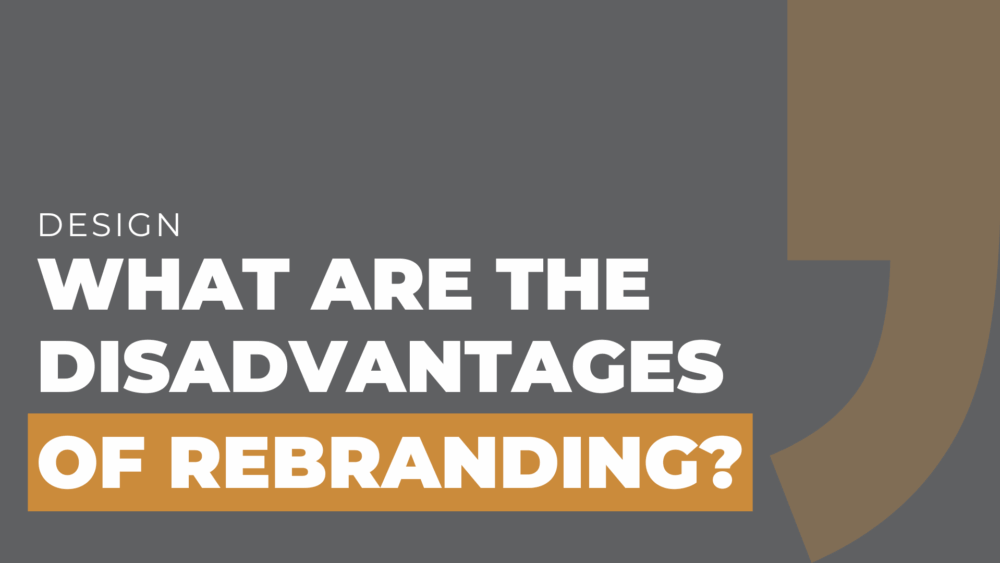Rebranding gives businesses a new identity and allows them to stay relevant, connect with new audiences, and revitalize their brand image.
But what are the disadvantages of rebranding?
Rebranding can also lead to significant risks such as alienating existing customers, incurring high costs, and potentially diluting the brand’s original message or values.
But we’re seen companies in Atlanta and across the country benefit from rebranding, as well.
Let’s look at the risks involved to help you make your decision.
Risks of Rebranding
Rebranding comes with risks just like everything in life.
Here are things to watch out for:
- Loss of Brand Equity: Rebranding can potentially lead to a loss of brand equity that has been built over time. Customers may become confused or disoriented by the sudden change, resulting in a decline in loyalty and trust.
- Customer Disengagement: Some customers may feel disconnected from the new brand identity, leading to disengagement and a decrease in sales. Rebranding requires careful consideration of the target audience and their preferences to minimize this risk.
- Negative Perception: Rebranding can be met with skepticism and resistance from existing customers and stakeholders. They may perceive it as an attempt to hide past failures or as a lack of consistency, which can tarnish the brand’s reputation.
Challenges of Rebranding
Here’s why rebranding can be challenging:
1.Costly Implementation
Rebranding is not just about designing a new logo and changing the color palette.
It encompasses a comprehensive overhaul of various aspects, including graphic design, marketing materials, website, packaging, and more.
The financial investment required for rebranding can be substantial, especially for larger organizations.
The costs to rebrand a small business can be much less, though, and more affordable.
2.Time-consuming Process
Rebranding is a time-consuming process that requires careful planning and execution.
It involves conducting market research, developing a new brand strategy, communicating the changes to stakeholders, and gradually transitioning to the new brand.
This can disrupt day-to-day operations and require dedicated resources to ensure a smooth transition.
3.Internal Resistance and Alignment
Rebranding often faces internal resistance from employees who may be attached to the existing brand.
Make sure you address their concerns, involve them in the process, and align them with the new brand vision to ensure a successful transition.
At the End of the Day
While rebranding can offer significant benefits, it is essential to be mindful of the possible disadvantages and challenges associated with it.
Before embarking on a rebranding journey, businesses should carefully evaluate their motivations, conduct thorough research, and develop a well-defined strategy to mitigate potential risks.
By addressing these challenges head-on, organizations can increase their chances of achieving a successful rebranding outcome.


Comments are closed.